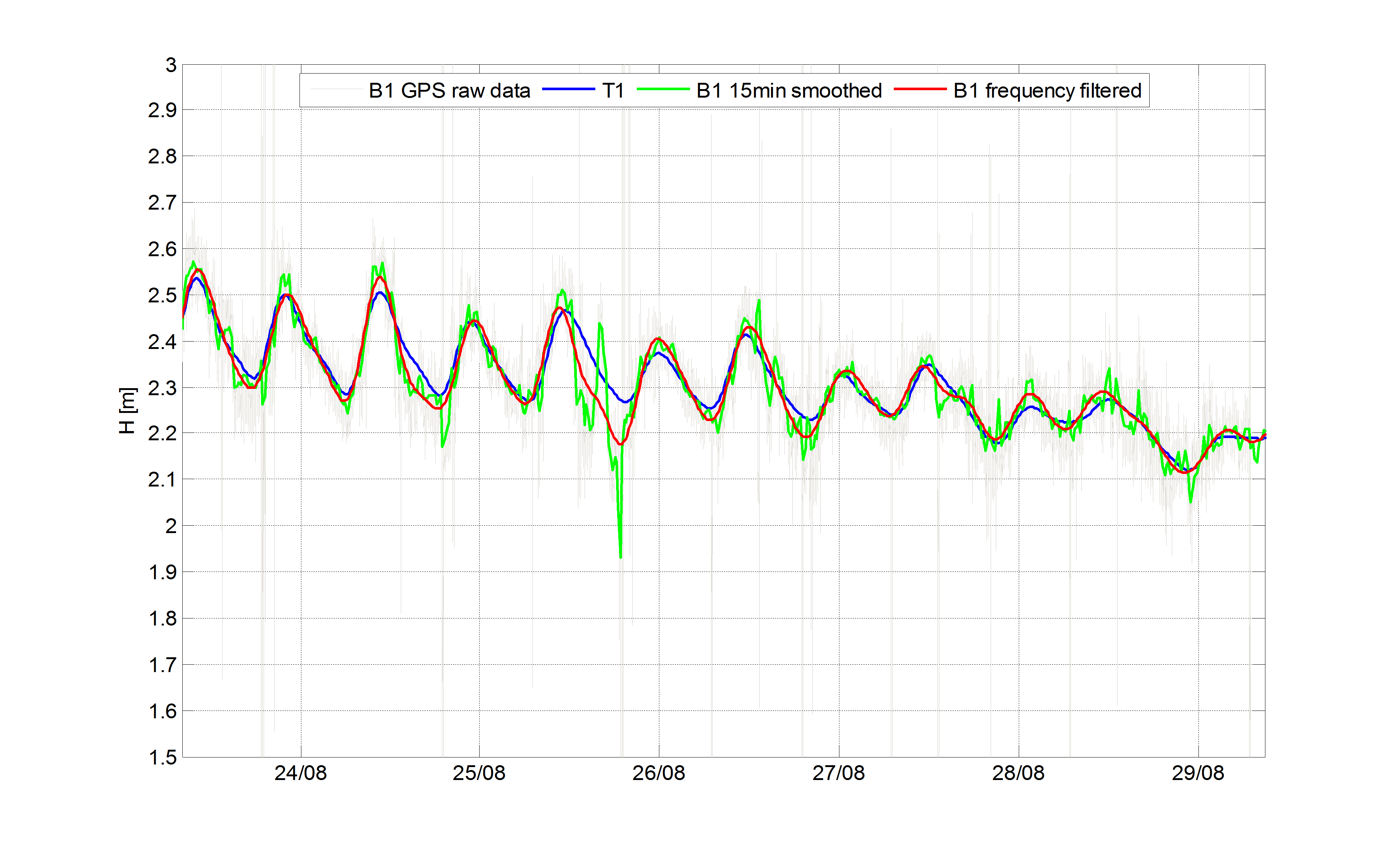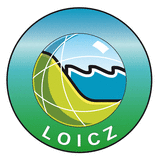GPS buoys for water level monitoring in large rivers
Monitoring of river stages is one of the basic observations required for understanding catchment hydrology and hydraulic systems. There are numerous measurement techniques available for this purpose, but in case of large rivers technical as well as financial problems often restrict the use of traditional techniques, e.g. pressure probes or float gauges. We explored the potential of Global Navigation Satellite System (GNSS) based water level measurements for stage monitoring by developing small and easy to handle buoys equipped with high-precision geodetic GNSS receivers.
The design of the buoys was particularly suited to the requirements of application in rivers, distinguishing them from typical wave rider buoys used in marine offshore applications. Fig. 1 shows the buoy in operation and constructional details.

Fig. 1: GPS buoys “STREAM 1”: a) buoy floating on Mekong river, b) interior of the buoy with GPS receiver and battery, c) solar panel and position lights, d) service interface underneath solar panel.
The advantages of buoys include the freedom of positioning and their quick and easy deployment. The developed buoys were tested in the Mekong Delta, Vietnam, at two different locations: on the Mekong river under high currents, and the second in a small nearby lake with hydraulic connections to a major channel with negligible currents. For this study, only data of the Global Positioning System (GPS) was collected and processed. Processing was undertaken in baseline mode using a nearby reference station and validated against standard pressure gauge data. The recorded stages proved to be of high quality (i.e. mean absolute error < 2 cm, cf. Fig. 2), thus potentially providing a useful resource for flood monitoring and modeling. In addition to the stage data, the results showed also the potential for monitoring position changes of the buoy and thus water movement. In the presented case study alternating currents caused by ocean tides could be detected, thus providing additional information about the hydraulic system. We conclude that the developed buoys add well to the existing hydrological monitoring pool and are a good option for the monitoring in rivers where traditional methods are technically difficult to deploy or too costly.

Fig. 2: Comparison of filtered GPS buoy water elevations B1 with water elevation of pressure gauge T1: processed unfiltered GPS data B1 (gray), 15 min moving window average smoothed series after error removal B1 (green), 15 min final frequency filtered water levels B1 (red), reference water level of T1 (blue).
More information:
Apel, H., Hung, N.G., Thoss, H., Schöne, T., 2012. GPS buoys for stage monitoring of large rivers. Journal of Hydrology, 412-413(0): 182-192.




